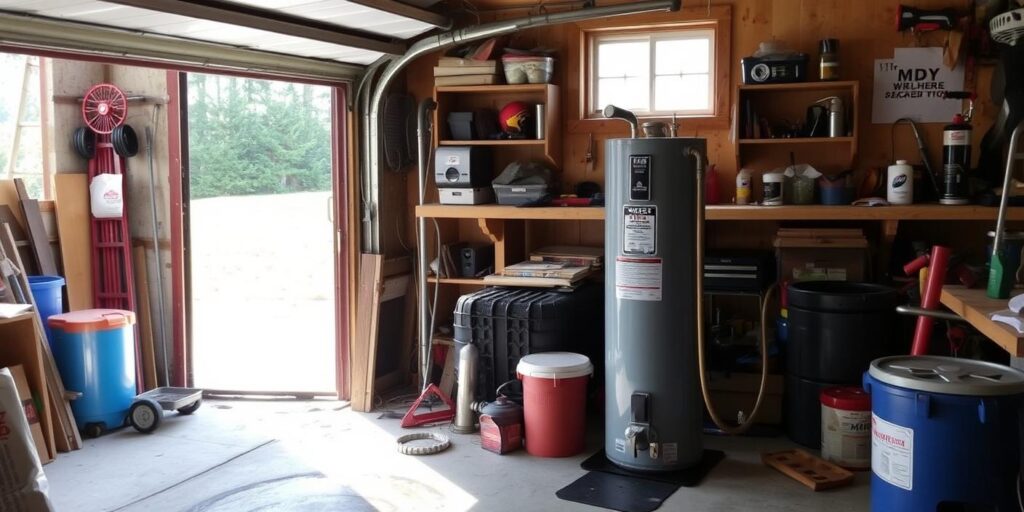Have you recently installed a new water heater and found it running out of hot water faster than anticipated? It’s a common issue that can leave both homeowners and plumbers scratching their heads.
Understanding why this happens is crucial for effective troubleshooting and maintenance. In this blog post, we’ll explore the factors that can cause your water heater to run out of hot water quickly and provide practical solutions.
Understanding the Issue
Sediment Buildup
One of the most common culprits behind a lack of hot water is sediment buildup. Over time, minerals from your water supply settle at the bottom of the tank, creating a barrier between the heating element and the water. This reduces the efficiency of your heater, causing you to run out of hot water faster. Homeowners and plumbers should be aware of this issue as it can significantly affect performance.
Tank Size and Capacity
Sometimes, the problem isn’t with the heater itself but with the size of the tank. If your household has grown or your hot water needs have increased, your current tank may no longer be sufficient. It’s essential to consider tank size and capacity when diagnosing the issue to ensure it meets your needs.
Temperature Setting
The temperature setting on your hot water heater plays a crucial role in its performance. If set too low, you may find yourself running out of hot water quickly. Conversely, a setting that’s too high can waste energy and increase wear and tear on the unit. Finding the right balance is key.
Age of the Heater
Even new heaters can have issues, especially if they are not installed correctly or are of poor quality. However, the age of your hot water heater is a significant factor. Older units are more prone to inefficiencies and breakdowns, so it’s essential to consider this when troubleshooting.
Usage Patterns
How you use hot water can also impact the performance of your heater. High-demand activities like long showers, running multiple appliances simultaneously, or sudden spikes in usage can drain your hot water supply quickly. Understanding your household’s hot water usage patterns can help identify the issue.

Troubleshooting
Step-by-Step Diagnosis
Diagnosing the problem with your hot water heater involves a series of steps. First, check the temperature setting to ensure it’s appropriately set. Next, inspect the tank for signs of sediment buildup, which can be done by draining a small amount of water from the tank. Finally, consider the age and capacity of the heater to rule out these factors.
Checking for Sediment Buildup
To check for sediment buildup, turn off the power and water supply to the heater. Then, attach a hose to the drain valve and carefully drain a few gallons of water. If the water is murky or contains particles, sediment buildup is likely the issue. Flushing the tank regularly can help maintain its performance.
Adjusting Temperature Settings
If the temperature setting is too low, increase it gradually and monitor the hot water supply. Be cautious not to set it too high, as this can lead to scalding and higher energy bills. A setting of 120 degrees Fahrenheit is usually recommended for optimal performance.
Managing Usage
Consider staggering high-demand activities to avoid draining the tank too quickly. Educate household members on the importance of conserving hot water during peak times. By managing usage more effectively, you can improve the performance of your hot water heater.
Preventative Maintenance
Extending the Life of Your Heater
Regular maintenance is critical for extending the life of your hot water heater. This includes flushing the tank periodically to remove sediment, inspecting the anode rod for corrosion, and checking for leaks. Routine maintenance can prevent many common issues and prolong the heater’s lifespan.
Regular Maintenance Checklist
- Flush the Tank: Every six months to remove sediment.
- Inspect the Anode Rod: Annually to ensure it’s not corroded.
- Check for Leaks: Regularly inspect the tank and connections.
- Test the Pressure Relief Valve: Annually to ensure it’s functioning correctly.
Professional Maintenance Services
While DIY maintenance can be effective, professional services offer a thorough inspection and maintenance routine. Professionals can identify potential issues before they become significant problems, ensuring your hot water heater operates efficiently.
When to Call a Professional
Signs You Need Expert Help
Certain signs indicate it’s time to call a professional. These include persistent issues despite troubleshooting, visible signs of damage, unusual noises from the tank, and a significant drop in hot water supply. Don’t hesitate to seek professional help if you encounter these problems.
Common Repairs
Common repairs that require professional attention include replacing the heating element, repairing leaks, and addressing electrical issues. Attempting these repairs without the necessary expertise can lead to further damage and safety hazards.
Avoiding DIY Fixes
While minor maintenance tasks can be handled by homeowners, it’s crucial to know when to step back and call a professional. Complex repairs and installations should always be left to qualified technicians to ensure safety and effectiveness.
Final Thoughts
In summary, understanding why your new hot water heater is running out of hot water quickly involves considering several factors, including sediment buildup, tank size, temperature settings, and usage patterns. Regular maintenance and timely professional intervention can ensure your heater performs optimally. By following these guidelines, homeowners and plumbers can address issues effectively and maintain a reliable hot water supply.
For more tips and expert advice, consider reaching out to a professional or scheduling regular maintenance checks. Your hot water heater is a crucial part of your home’s comfort, and taking care of it ensures consistent performance and longevity.